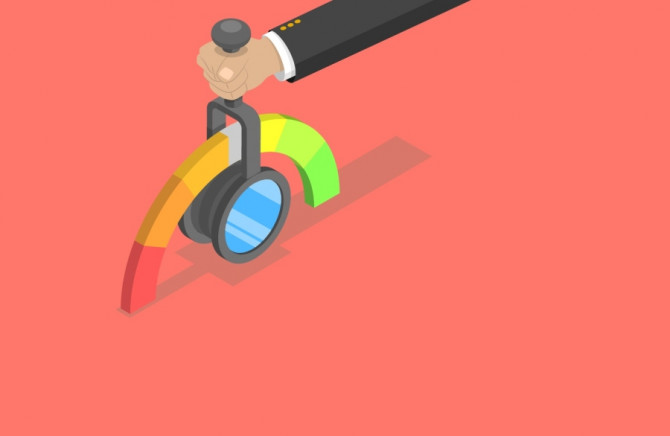How much does your client cost?
- What is the CAC (Customer Acquisition Cost) index?
- How do we calculate it?
- What other indicator is it related to?

Many companies make the same mistake: they conduct marketing and advertising activities and consistently acquire new customers, but in the end, they don’t seem to make any profits - they may even lose money. How is that possible? The reasons may be different, but the most common error is improper calculation of the cost of customer acquisition, or not doing such calculations at all.
This problem affects both companies that are new on the market and those with years of experience. In the latter case, it may not result in losses, because if the company were losing money for a long time, it would eventually have to close up. It’s more about the fact that the company is calculating the cost of customer acquisition incorrectly, which means that their further development plans are often full of errors and that their final results always turn out to be worse than expected - even if everything looked good on paper and even if they did the analysis and forecast solid revenues and profits.
If the CAC (Customer Acquisition Cost) is too high, it may lead to losses for the company, even if it continues to acquire new customers. So how can we avoid this problem? Firstly, we need to understand what CAC is, what the directly related CLV coefficient is (more about that later), and secondly, we need to learn how to calculate it correctly.
Why we can’t calculate CAC
If we calculate the CAC correctly, we will learn something we absolutely need to know: how much money we actually spend on acquiring a customer and how much revenue we gain once we acquire that customer. Knowing the CAC, we will know how profitable a given marketing or advertising strategy is. If the results are positive, we will be able to expand our activities and attract more clients, and if the CAC turns out to be too high, we will be able to make appropriate changes and avoid further losses.
Depending on your business, you will need to consider different types of expenses when calculating your CAC. On the one hand, the formula for calculating the CAC is quite simple:
CAC = (sales costs + marketing costs) / number of customers acquired
On the other hand, in practice, many companies don’t take into account some costs and it later turns out that, for example, the cost of acquiring a client is not $10, but $50, because we didn’t count the work that goes into advertising, employee time spent answering e-mail inquiries, or the amount we spent on that marketing tool that we bought a one-year subscription for a few months ago.
The most common mistake companies make is when calculating the CAC is only taking advertising and marketing expenses into account. So, I emphasise: the CAC should include all costs that are in any way related to the acquisition of a customer. These may include activities, tools, and services such as:
- advertising campaign costs, including creative productions (e.g., graphics, films),
- cost of technology used to attract customers (e.g., marketing automation systems, chatbots, help desk software, helpline),
- cost of employees involved in customer acquisition - remember that most technical tools have to be operated by a specialist,
- cost of creating content for promotional activities and for social networking sites,
- cost of office space,
- payment commissions for online payment systems.
There may be more such costs - it all depends on the business you’re in. However, in order to calculate the CAC carefully, we can’t leave out anything. Otherwise, we’ll never know how much it really costs us to acquire a customer.
It’s also worth doing CAC calculations every month, though some of the parameters should be analysed and optimised more often - for example, we can monitor and optimise advertising spending on a day-to-day basis.
Calculating CAC. Example: e-commerce store
Suppose we run an e-commerce store selling consumer products such as clothing. Last month, we spent $100,000 on advertising, while the marketing team says that customers submitted 10,000 orders in that time. This gives us a CAC of $10 per customer, though this value in itself doesn’t really matter.
In our case, the average order was for $25. That means that in practice, we earned an average of $15 per customer per sale, but we also have to take into account that we also have to pay for employee salaries, webhosting, office space, and other expenses related to running a business. So overall, we have a return on investment, as we spent $100,000 and earned $150,000, so we have $50,000 more. But is that enough to cover all our costs and generate profit? This, of course, depends on how high our costs are.
At this stage, however, our calculations aren’t finished. What if an already-acquired customer places further orders in the future? Some people won’t come back to our store, but some will definitely decide to buy again.
This is where CLV appears. If a customer acquired once (for $10) makes a $25 purchase every two weeks, the cost of acquiring that customer seems very small. For this reason, when calculating a CAC, it’s also a good idea to measure your CLV quarterly to see how many customers are still shopping. This knowledge will be very helpful. It may turn out that many customers shop regularly, meaning that in the future we’ll be able to conduct better and more expensive and better advertising campaigns, because we will be sure that it’ll pay off anyway, and the costs incurred will certainly pay off. Knowledge of CLV also allows us to create much more precise strategies for the company’s ongoing development
Wykorzystałeś swój limit bezpłatnych treści
Pozostałe 55% artykułu dostępne jest dla zalogowanych użytkowników portalu. Zaloguj się, wybierz plan abonamentowy albo kup dostęp do artykułu/dokumentu.






 Zaloguj się
Zaloguj się








